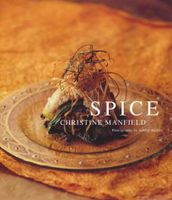Advertisement
Ginger
Published 1999
Ginger, thought to have originated in China or India, has a long culinary and medicinal history that dates back to the writings of the Chinese philosopher Confucius. By the thirteenth century it had become the most commonly used spice in the world after pepper. Today ginger, a rhizome, is grown all over the world in suitably warm climates and is indispensable when cooking with spices. Fresh ginger has an unmistakable, pungent aroma, which is both sweet and woody, and a warm, penetrating flavour. Green or young ginger has smooth, papery skin that doesn’t need peeling and soft, dense flesh that is very easy to cut and slice. Older ginger develops a more fibrous texture and the skin becomes thicker. Ginger can also be purchased in powdered form (good for cakes and confectionery work), preserved in syrup, candied, crystallised, dried in slices, or pickled. Ginger is highly regarded as a digestive aid, for improving blood circulation, as an antidote to gout and as a cure for travel sickness. Available: widely (look for young ginger in Asian food stores, in particular).


